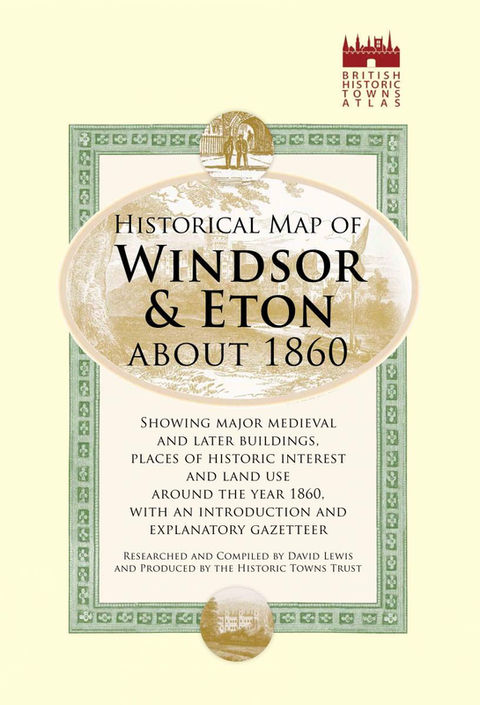Town & City Historic Maps
Tudor London
The City and Southwark in 1520 (Second edition)
Published in association with:
London Topographical Society


Would today's London be recognisable to the Tudors?
The buildings of Tudor London have almost completely disappeared. The monastic houses were dissolved in the sixteenth century; the Great Fire of 1666 destroyed two thirds of the city; the Roman and medieval walls were largely swept away in the eighteenth century; Victorian roads and railways cut swathes through the medieval street plan; and the bombing of the Second World War destroyed most of what had survived the Fire. Fewer than a dozen medieval buildings are left in the City of London today.
But Tudor London still lurks beneath the surface! This map has been reconstructed by historians who have studied the surviving documents and by archaeologists providing evidence from the remains now buried below the present street level.
Their painstaking work has made it possible to create this map of the Tudor city as it was five hundred years ago in the early years of the sixteenth century when the Scottish poet William Dunbar admired London, and celebrated it as 'The Flour of Cities All'.

London in 1520 was first researched in the 1980s by Col Henry Johns, one of the founders of the Historic Towns Trust. His information has been updated and converted to a sheet-map covering a larger area and including parts of Southwark. All the major buildings have been reviewed and most revised to reflect historical research and archaeology over the last 30 years.
Buildings are classified by type (e.g. parish churches, civic and commercial buildings, defensive structures), and the map shows parish boundaries for the first time.
The reverse of the sheet has a directory of all the streets and buildings shown on the map, and a map of the City of London's wards in 1520. It has a brief history of the city, and information boxes on some of the themes of London's history - the river and waterfront, and the many inns shown on the map
This map was published with a generous grant from the London Topographical Society.
The first edition of this map was published in May 2018 with an updated edition published in 2022. A comprehensive report on the map, including new observations, a summary of the revision process as well as the research findings are all detailed below. Also available for download is a full bibliography of the Revised Map of Tudor London.
You can also watch a lecture by 2022 Trust Chair Professor Vanessa Harding in which she presents her research on Early Tudor London recorded as part of the Spring Lecture Series.
Revising the map of Tudor London
The Map of Tudor London, published by the Historic Towns Trust in 2018 and published in a second edition in 2022 has been revised and redesigned for the Trust’s Town and City Historical Maps series by Giles Darkes, Cartographic Editor to the Trust, in collaboration with Caroline Barron, Vanessa Harding, and Nick Holder, and with additional information from Martha Carlin. We also thank Mark Merry, Gabriele Richardson, John Schofield and Charlotte Stanford for their help. Production of the map was generously supported by the London Topographical Society.
In the PDF below, Professor Vanessa Harding explains the process behind the revision of the map of Tudor London, and the editorial approaches taken.
A bibliography of the sources used in the revised edition is available to download below.
Early Tudor London: On the Brink of Transformation?
with Professor Vanessa Harding
London in 1520 - the date of the Historic Towns Trust’s map – was still essentially a medieval city, but on the brink of two transformative events: the Reformation, and the ensuing dissolution of the monasteries, and explosive population growth. London’s medieval monasteries, nunneries, and friaries had been closed down by 1540, and only some of the hospitals survived. Meanwhile, the capital’s population, perhaps 50-60,000 at the beginning of the century, had expanded to c. 200,000 by the end. This lecture will consider the physical form of the city around 1520, and the changes that were already perceptible.
Published in association with
London Topographical Society
The London Topographical Society was founded in 1880 for the publication of material illustrating the history and topography of the City and County of London from the earliest times to the present day. Their Society has about 1,200 members worldwide. As well as individuals, membership includes more than 100 universities, libraries and other institutions.
Publication Details
Published Date:
July 2022 (2nd edition), May 2018 (1st edition)
ISBN:
978-1-8380719-4-3 (2ed)
RRP:
£11.99
Please note: Our maps are available to buy from our online Shop, through local booksellers and other outlets in the cities featured, or by ordering through any bookshop or online book retailer.






















